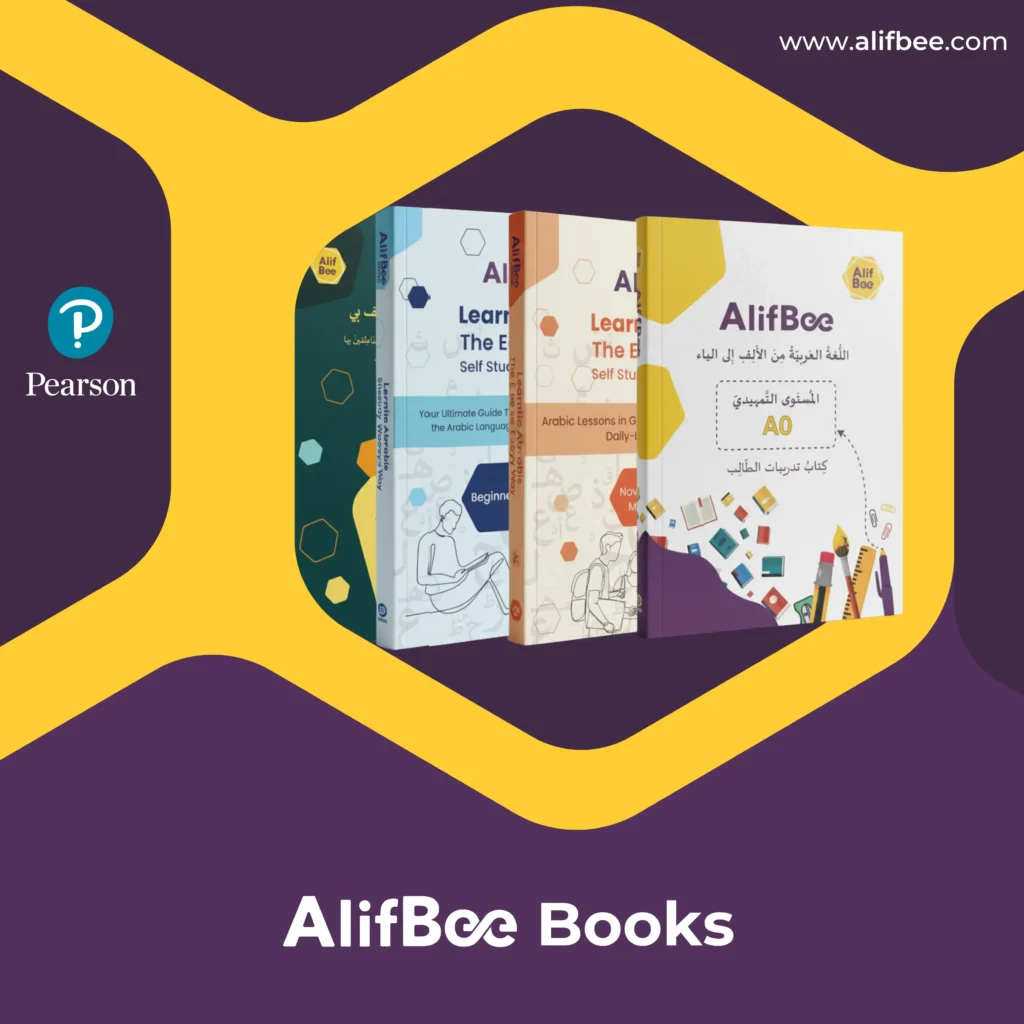To many English speakers, the Arabic language sounds unusual and even amusing, with multiple sounds that lack exact equivalents in the Latin alphabet. Yet, it has this charm since it belongs to one of the oldest, richest, and most ill-understood cultures in the world.
Maybe you want to order a steaming plate of shawarma in a bustling market or share a laugh with new friends over mint tea. But then, you catch a glimpse of the Arabic script—those elegant, flowing letters that look like they belong in a treasure map from Raiders of the Lost Ark—and suddenly, your confidence dives. “Do I really need to learn to write Arabic to speak it?”
If this sounds like a question you’d ask, you’re not alone! For many beginners, the Arabic script can seem like a daunting puzzle, and it’s tempting to skip it altogether in favor of focusing on speaking. But would learning Arabic be necessary? This guide will answer all your questions, so let’s explore this topic together.
Do You Need to Learn to Write Arabic to Speak It?
Now, let’s not waste time and tackle the big question: Do you need to learn to write Arabic to speak it?
The short answer is: No. You can definitely learn to speak Arabic without writing or even reading the script. With some practice, you can learn the basics of small talk, making a trip, and even greetings. Think of it like learning to sing along to your favorite song—you don’t need to read the sheet music to nail the tune. Sounds great, right?
However, that’s about it. If you want to learn Arabic to build vocabulary or master the language, learning how to write would be a must.
Plus, it’s essential if you’re planning to spend a significant amount of time in an Arabic-speaking country. You could learn to read the signs, social media posts, Arabic literature without translation, and the menus. The list is endless.
When you learn to write and, of course, read Arabic, you build a real connection with the culture, and you become more than just “this guy from abroad.”
Benefits of Learning to Write Arabic (Even as a Speaker)
Okay, so you’re sold on learning to speak Arabic and maybe already practicing your “Marhaba” with flair. But here’s the fun part: learning to write Arabic, even if you’re mostly focused on speaking, is like adding rocket boosters to your language journey.
We get it. The Arabic script might look like a secret code from an ancient scroll, but cracking it brings some seriously awesome perks. Here are some benefits you’d enjoy.
- Learning Arabic for beginners is like a workout for your brain’s memory muscles. When you write a word—say, كتاب “kitāb” (book)—you’re not just hearing it; you’re actively recalling how each letter connects and what it means. This process, called active recall, cements words in your mind like glue, and they begin to follow naturally in the middle of your conversations.
- Arabic pronunciation can feel like a tongue-twisting adventure, with sounds like “ḥ” or “ʿayn” that don’t exist in English. If you’re struggling with these sounds, this approach might work for you. Writing helps you see how letters and vowel marks shape those sounds. For example, spotting the difference between “بَ” (ba) and “بِ” (bi) in the script trains your eyes and ears to work together for smoother pronunciation.
- Learning the Arabic script grants you a smoother and richer experience in every Arabic-speaking country. It goes beyond ordering your favorite falafel as you explore life like a local.
- There’s something magical about writing your first Arabic sentence. It will feel like a personal win that nothing else matches. That “I did it!” moment builds confidence that spills over into your speaking skills. Additionally, knowing the script provides access to Arabic books, websites, and even song lyrics.
How to Learn to Speak Arabic First Without Writing
But before you get tangled in the curved alphabet, let’s follow a simple approach: speak first, write later. It’s a fun, low-pressure way to kickstart your Arabic adventure and help you get more familiar with the sounds. By focusing on conversations, you’ll build momentum and confidence faster than you can say, “Yalla!” (Let’s go!).
Want to know how to learn Arabic? Here are some tips to help you.
Go Audio-First with AlifBee
AlifBee is a fantastic app designed for Arabic learners, providing the boost you definitely need. The idea is simple: listen to native speakers pronounce words and phrases, then repeat after them like you’re starring in your own Arabic blockbuster.
AlifBee’s interactive lessons make it feel like a game, helping you nail pronunciation and pick up useful expressions without touching a pen.
Master Oral Repetition and Role-Play
Practice makes perfect, and oral repetition is your secret weapon. Repeat common phrases like كيفَ حالُك “Kayf haluk?” (How are you?) until they roll off your tongue.
Take it up a notch with role-play and pretend you’re ordering food or greeting a friend at a café. You can try it with a language partner or even talk to yourself in the mirror.
Remember that these simple dialogues build your speaking muscles and make real-life conversations feel like a breeze.
Learn Common Phrases with Transliteration
Don’t know the Arabic script yet? No problem! Use transliteration—Arabic words written in English letters—to learn phrases like ما اِسمُك “Ma Ismuk?” (What’s your name?).
Transliterations let you focus on speaking without worrying about the alphabet, and they are perfect for self-learners. A good tip: try memorizing a handful of go-to phrases for greetings or shopping.
Delay the Script Until You’ve Got Momentum
Don’t get carried away, and hold off on learning the Arabic script until you’re feeling confident with basic conversations. This keeps your learning fun and stress-free, letting you focus on the joy of speaking.
Once you’ve got a few phrases down and you’re chatting with ease, you can dip your toes into the script to level up.
When and How to Start Learning to Write Arabic?
So, you’ve been saying a few words here and there, and you’re gaining momentum. When is the right time to start learning to write the Arabic script?
With the right timing and tools, it doesn’t have to be intimidating.
Ideally, after a week or two, you’d be able to say a few words with confidence. You’d also be sure that you want to spend more time practicing your Arabic.
Once you’re ready, it’s time you focus on the alphabet. They might seem like a puzzle at the beginning, but don’t get overwhelmed. You can divide them into chunks and learn three or four at a time. Tip: group similar letters like “ب” [ba], “ت” [ta], and “ث” [tha] to focus on a similar sound.
Learning a new language can be challenging. However, using AlifBee’s tools, like flashcards, you’ll be able to recognize the letters. In fact, AlifBee offers multiple interactive props that enable you to master the sounds and pronunciation. Try playing a writing game by doodling a letter while practicing its sound.
You can also use mnemonics to help you master Arabic letters. For example, picture “ج” (jeem) as a camel’s hump to remember its shape and sound. For a memory superpower, pair this game with spaced repetition by reviewing letters at increasing intervals.
Common Struggles with Arabic Writing—and How to Beat Them
So, you’re ready to tackle the Arabic script, but let’s be real: decoding the letters could feel like translating an ancient map. But don’t worry, you are not alone. Those challenges are part of the journey. Here are some of the difficulties that other people face.
Flipping The Script
Writing from right to left is usually the biggest and first challenge. It’s like driving on the opposite side of the road: you know how to do it, but it feels unnatural.
However, you can practice tracing the letters from right to left until it starts to feel natural.
Arabic Letters Have Too Many Looks
Arabic letters appear differently depending on their position within a word. For example, “ب” (ba) looks different in “بيت” (bayt, house) than alone.
The more you read, the more you’ll be able to recognize how the letters appear. To beat this, focus on one letter at a time and practice its four forms (isolated, initial, medial, final) using flashcards.
You Can Easily Get Confused
The position of the dot can change the “ن” [nun] to a “ب” [ba]. Beat this by creating a mental picture of letters and how they look so you’ll remember them better.
You can also turn this into a fun game by spotting these letters and patterns in logos, signs, and other real-life examples.
Learning A New Language Can Be Overwhelming
This is more common than you think, so break the process down into manageable daily steps. Spending 5 minutes a day to trace one letter, review a flashcard, or write one word will work wonders.
It might not seem much, but practice makes perfect. Add some Arabic music to the background, and it will be a fun ritual.
Final Word: Balance Both for Long-Term Fluency
It’s time to start your Arabic learning adventure, and we promise you’re in for a wonderful ride. Whether you’re just trying to nail basic greetings or want to focus more on reading Arabic literature, this will be a life-changing experience.
You don’t have to master writing Arabic alphabets to be able to speak fluently. Nevertheless, learning how to write Arabic will elevate your experience and boost your fluency. It could be challenging, but this makes it even more worthy.
If you’re just starting, focus on speaking to order your kunafeh or talking with the locals. But down the road, writing will make you an even better speaker. It’s like training with a lightsaber to become a Jedi as you learn about grammar and patterns for better comprehension. You’ll also be able to retain more vocabulary through real-life practice.
Think of speaking and writing like two best friends on your Arabic adventure and they work better together. Speaking gives you confidence and real-world practice while writing unlocks menus, books, and deeper cultural connections.
Ready to start your journey? Download the AlifBee app to make your Arabic learning so much more fun. With interactive lessons, audio for speaking practice, and tools to ease you into writing, AlifBee is your trusty sidekick. Head to your app store, grab AlifBee and let the adventure begin.








